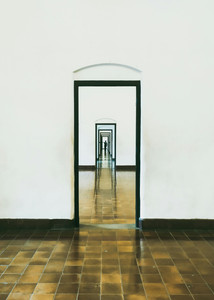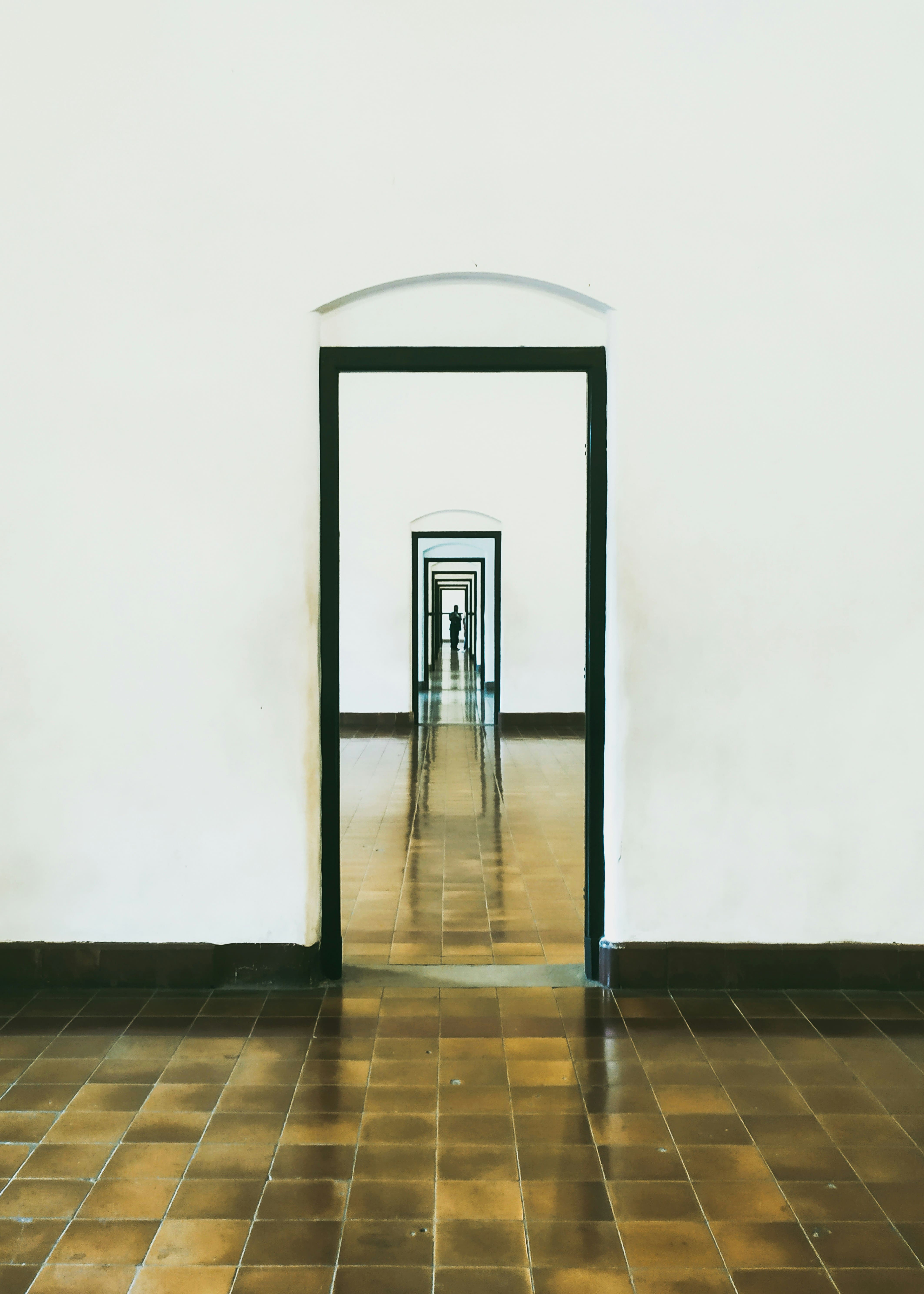
The Pros and Cons of Pocket Doors in Home Design
Pros and Cons of Pocket Doors in Home Design

When it comes to clever space solutions in home design, pocket doors often stand out as space-saving champions. Unlike traditional hinged doors that swing into a room, pocket doors glide along a track and neatly disappear into a 'pocket' within the wall. As homeowners and designers search for ways to optimize space and streamline home aesthetics, the debate over the virtues of pocket doors becomes more than just an architectural quirk—it's a practical consideration that can significantly alter the feel and function of interior spaces.
In this comprehensive guide, we will dissect the multifaceted world of pocket doors. We'll look at the advantages they offer, such as maximizing space and creating fluid living areas, alongside the potential downsides, including issues with sound insulation and upfront cost. Whether you're renovating an old residence or designing a space from scratch, understanding the full spectrum of pocket door benefits and challenges will arm you with essential knowledge to make a confident design choice.
Introduction to Pocket Doors
Definition and Functionality of Pocket Doors
Pocket doors are interior doors that slide open and closed from within the wall's recess. This space-saving mechanism allows for a full door to be tucked away out of sight, maximizing room space and providing a wide, unobstructed aperture when open. Their historical use can be traced back to Victorian and Craftsman-style homes, but today, they are emblematic of modern and contemporary interior design trends.
Overview of Pocket Doors as Space-Saving Solutions in Home Design
For homes with limited space, pocket doors present an elegant solution by eradicating the clearance needed for a hinged door to open and close. They are particularly popular in small apartments, open-plan living areas, and accessibility-focused homes. Their ability to create an open-concept feel without sacrificing the privacy of individual rooms is part of their enduring appeal.
Advantages of Pocket Doors
Maximizing Floor Space in Small or Narrow Areas
In tight quarters, every inch of available floor space is precious. Pocket doors, with their ingeniously concealed design, free up the area typically needed for a door's arc when opening and closing. This feature makes them ideal for cramped spaces, such as en-suite bathrooms and closets, where space is at a premium, and a swinging door could impede the layout and flow of the room.
Creating a Seamless and Open Flow Between Rooms
Where traditional doors can interrupt the visual connection of adjacent spaces, pocket doors offer a more fluid transition. They create a seamless flow between rooms, which can be particularly advantageous in open-concept living areas, where the desire is to create a connected yet flexible space that adapts to varying uses.
Offering Design Versatility with Various Material and Style Options
Pocket doors provide design flexibility, allowing homeowners to choose from a range of materials and styles to suit their interior aesthetic. Whether you're looking for a sleek glass door to offer transparency without compromising on separation, a solid wood door for a warm and traditional feel, or a contemporary design that complements your home's modern look, pocket doors can be customized to match any decor.
Disadvantages of Pocket Doors
Limited Sound Insulation and Privacy Compared to Traditional Doors
One of the main drawbacks of pocket doors is their reduced ability to block out sound. Traditional doors create a solid barrier when closed, but pocket doors leave gaps even when shut, which can result in a loss of privacy and noise transmission between rooms. For areas where soundproofing is crucial, such as home offices or bedrooms, conventional doors may be a better choice.
Potential for Issues with Installation and Maintenance
The complexity of the installation process can lead to a higher chance of mistakes that, in turn, may result in operational issues. Maintenance can also be more challenging, requiring periodic checks and the occasional readjustment. If not properly cared for, the tracks can become dirty and the wheels can wear, leading to difficulties in opening and closing the door.
Higher Cost and Complexity of Installation Compared to Standard Doors
It's no secret that pocket doors are a significant investment compared to standard hinged doors. The hardware, construction, and labor costs associated with their installation are typically higher, making them a pricier option upfront. However, this can be offset by the long-term benefits they offer in terms of space optimization and visual appeal.
Applications of Pocket Doors in Home Settings
Small Living Spaces: Apartments, Condos, and Tiny Homes
For homeowners in compact living environments, pocket doors are invaluable tools to create space and enhance the flexibility of room layout. They are especially popular in urban settings, where real estate is at a premium, and every square inch must be considered thoughtfully.
Open Concept Layouts: Kitchen, Dining, and Living Room Areas
In modern open-concept layouts, the use of pocket doors can help to maintain the option of individual room closures while keeping the overall flow open and uncluttered. When entertaining or during quiet nights at home, these doors can delicately delineate spaces while remaining unobtrusive.
Accessibility Needs: Wheelchair Accessible Homes or Aging-in-Place Designs
Pocket doors offer wider and more accessible entryways for individuals with mobility challenges or those who require the use of a wheelchair. They allow for easier movement from room to room and can be a strategic element in creating a barrier-free living environment.
Design Considerations for Pocket Doors
Material Choices: Wood, Glass, Metal, or Composite Materials
Each material offers distinct advantages. Wood pocket doors provide a classic and warm aesthetic, while glass panels maximize light and the impression of space. Metal frames can suit industrial or minimalist designs, and composite materials offer a balance between durability and style.
Hardware and Accessories: Handles, Tracks, and Locking Mechanisms
Selecting the right hardware is crucial for the functionality and longevity of pocket doors. High-quality tracks and robust locking mechanisms ensure smooth operation and secure closure. Meanwhile, handles and pulls offer an opportunity to add a touch of personal style to your doors.
Customization Options: Size, Finish, and Style to Match Home Décor
Pocket doors can be tailored to fit your home's unique specifications. From adjusting the size to accommodate larger or oddly shaped openings to selecting a personalized finish that complements your interior design, customization allows you to integrate pocket doors seamlessly into your home.
Installation and Maintenance Tips for Pocket Doors
Proper Preparation and Planning for Installation
Thorough preparation, including ensuring the structural integrity of the opening, selecting and prepping the appropriate wall materials, and choosing the right hardware, is the foundation of a successful pocket door installation. Improper planning can lead to issues down the line, so it's essential to take the time to get it right from the start.
Regular Cleaning and Lubrication for Smooth Operation
Regular maintenance, such as cleaning the tracks and lubricating the wheels, is vital to keep pocket doors operating smoothly. This simple upkeep can prevent the accumulation of debris that may impede the door's function and help to extend its life.
Addressing Any Issues Promptly to Ensure Longevity and Functionality
If you notice your pocket door starting to drag or stick, addressing the issue promptly can prevent more significant problems. Sometimes, all it takes to fix these problems is a simple adjustment or replacement of worn parts, but neglecting the issue can lead to more costly repairs.
Conclusion: Evaluating the Pros and Cons to Determine If Pocket Doors Are Right for Your Home
Picking the right modern interior doors is an important decision in home design. By weighing the pros and cons of pocket doors, you can better assess whether they align with your home's needs and your personal preferences. While they offer undeniable benefits in terms of space efficiency and the cohesion of interior spaces, they also come with considerations in terms of performance and cost. Ultimately, whether a pocket door is the right choice for your home is a question of how well it fits into your lifestyle, design vision, and budget.
Frequently Asked Questions (FAQs)
What are pocket doors and how do they work?
Pocket doors are interior sliding doors that disappear into the wall. They operate on an overhead track system that allows them to slide open and closed, nested out of sight when not in use.
What are the main advantages of using pocket doors in home settings?
Pocket doors save space, enhance the flow between rooms, offer design flexibility, and are particularly useful in certain applications, such as creating accessible doorways.
What are some limitations or challenges associated with pocket doors?
Pocket doors may not have as much soundproofing or privacy as traditional doors and can require careful maintenance to prevent issues.
Are pocket doors suitable for all types of rooms in a house?
Pocket doors can be used in many different rooms, from bathrooms and closets to living areas and offices, depending on their intended function and the level of privacy required.
How do I choose the right pocket door design for my home?
Consider the materials, style, and size of the door in relation to your home's existing decor, as well as any specific needs, such as sound insulation or accessibility.
What maintenance is required for pocket doors to ensure longevity?
Cleaning the tracks and oiling the wheels regularly will ensure smooth operation. Additionally, you may need to periodically check the frame for any structural issues.
Can pocket doors be installed as exterior doors?
While less common, pocket doors can be installed for exterior access. However, this will typically require more weatherproofing and potentially a larger budget.
Are there any energy efficiency considerations when selecting pocket doors?
Like any interior door, the energy efficiency of pocket doors comes down to the quality of the seal and the materials used. Glass panels may affect insulation, so be sure to choose energy-efficient glass if that's a concern.
What are some common issues that may arise with pocket door installation?
Poor planning leading to misaligned tracks, inadequate space within the wall, or subpar hardware choices can all lead to problems with pocket door installation.
Are there any alternatives to pocket doors for maximizing space in home design?
Barn doors, sliding French doors, and accordion doors are all alternatives worth considering for space-saving elegance in home design. Each comes with its own set of advantages and considerations, so be sure to compare them to pocket doors to find the best fit for your home.
